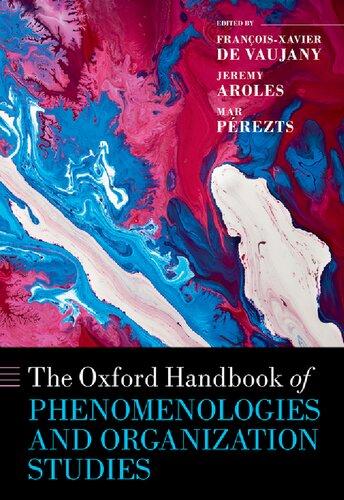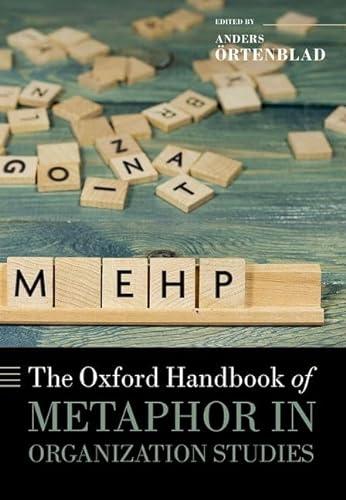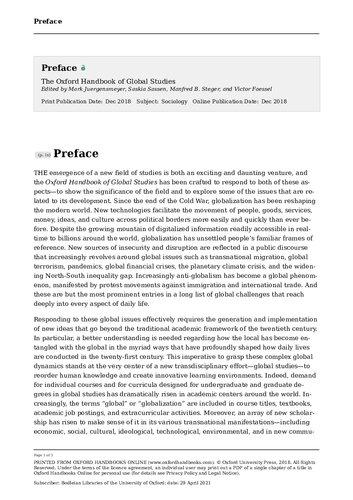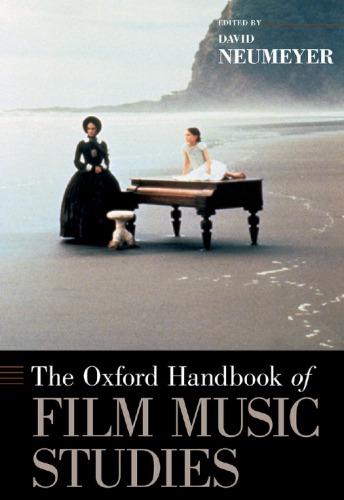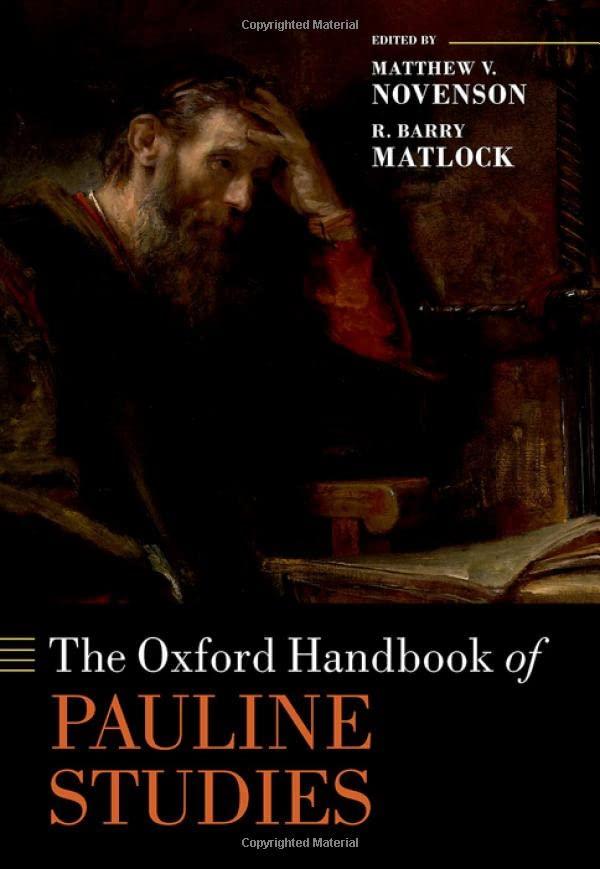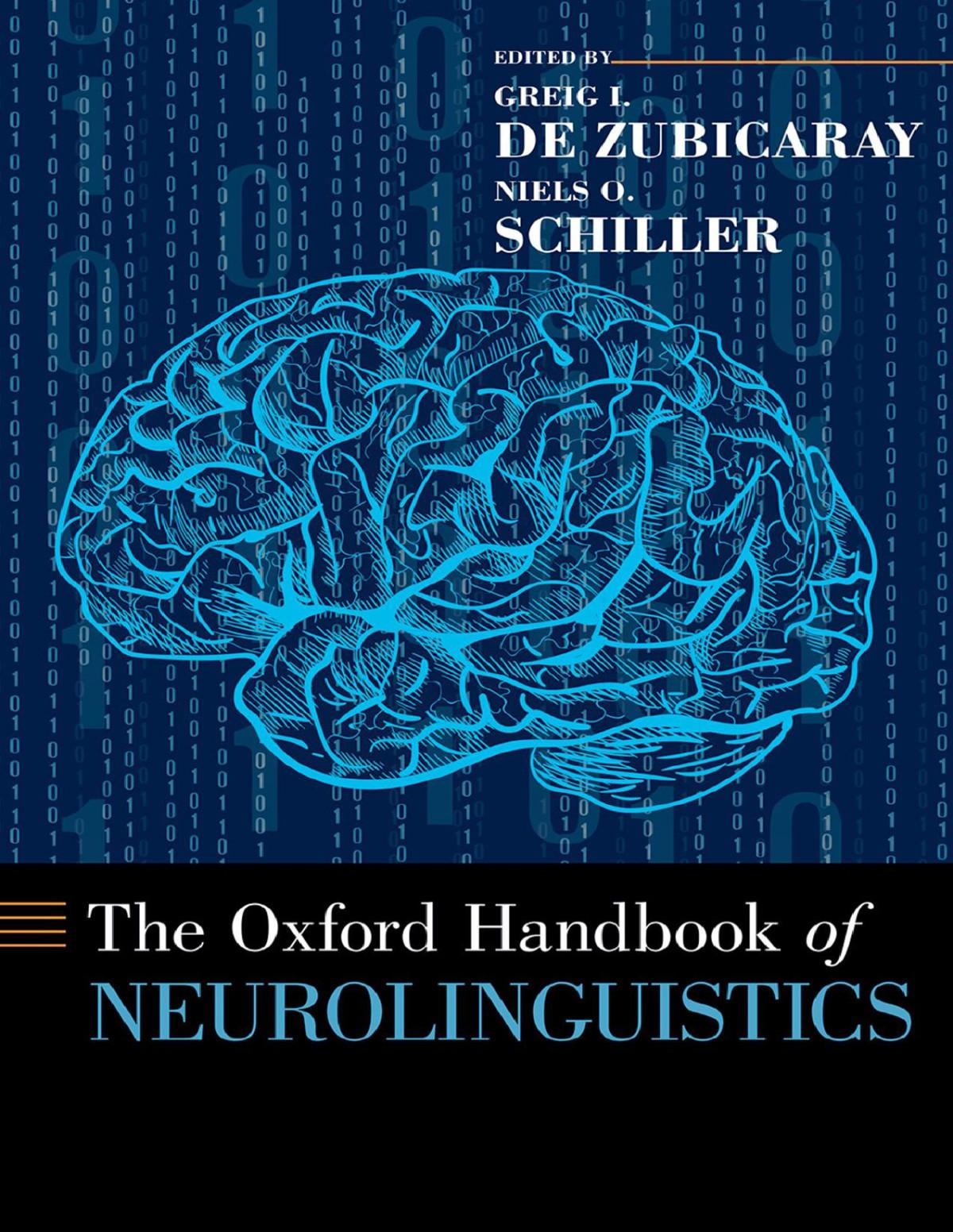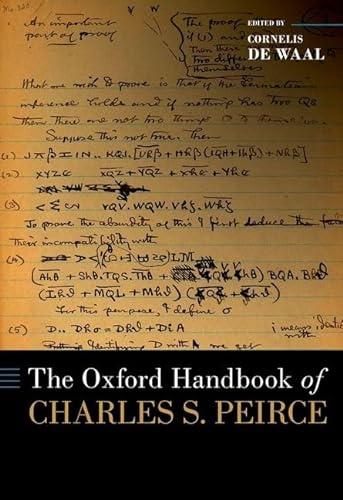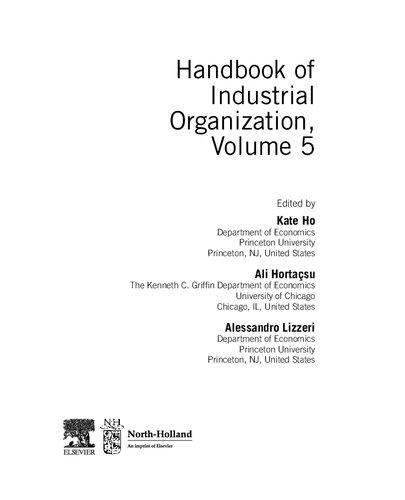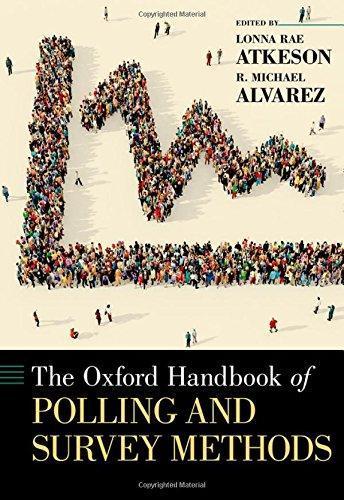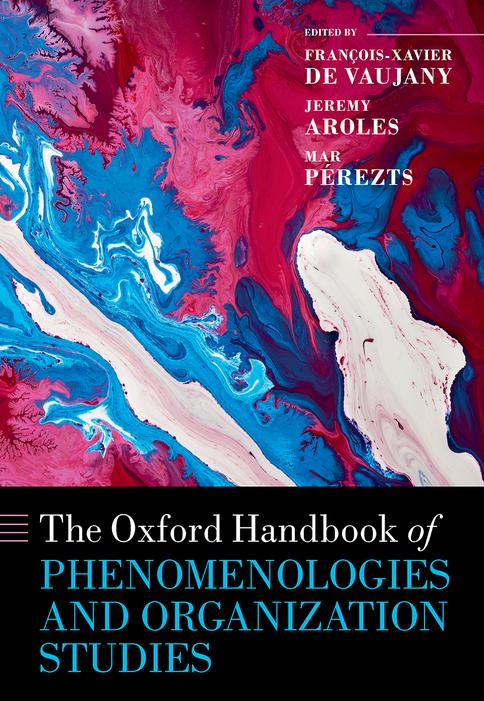Preface
Hartmut Rosa
At first glance, it would appear that Management and Organization Studies (MOS) are the least likely places to attract the attention of phenomenologists—or, vice versa, to profit from and thrive on phenomenological accounts. In short, it would appear that these two fields of study are mutually deaf to each other; if not straightforwardly incompatible, then at least incommensurable. The reason for this is that in the social sciences as well in the humanities, there are, generally speaking, two paradigmatic ways of looking at processes, institutions, and events: One is from the outside, from a third person perspective, i.e. from a perspective in which the observer stands apart from what is observed and remains, as much as possible, unaffected by what she observes. The other is from the inside, from a first person perspective. Here, the observer takes the impressions, affections, and intentions that connect her with the observed phenomena precisely as the starting point for social or philosophical analysis. This analysis, then, of course needs to be intersubjectively and dialogically discussed and validated. This latter approach is called ‘phenomenology’, and as this book makes very clear from its title as well as from its contents, there are many different versions of construing and pursuing such an approach, which is why the editors aptly speak of ‘phenomenologies’ in the plural.
Now, the main thrust of MOS generally follows a third person perspective approach, frequently modelled on the natural sciences, trying to produce and analyse models and data that can stand the test of hard sciences. Yet, if we try to really understand what is going on in organizational life, in managerial action, and in the fabrication, change, and devolution of institutions, we quickly realize that we cannot simply do away with the embodied inside, with the first person perspective. Organizations would be ‘dead structures’, devoid of any action without the acting subjects as centres of experience: It is their motivational energy—it is their hopes and fears, aspirations and inclinations, perceptions and affections—that ultimately serves as the motor and fuel of institutional life. Hence, we need some sort of hermeneutical or phenomenological reconstruction of these hopes and fears, attractions and repulsions if we want to fully capture the inner logics of organizations; not just of how they work, but also of where, when, and how they fail to work properly.
Alas, as every sociologist will be quick to point out: it would be completely wrong to rely on the inside, on agents’ intentional, motivational, and affective stance and states alone, because we know by now pretty well that these states and stances are strongly influenced, shaped, and moulded by organizational rules, routines, and processes, by institutionalized expectations and temporalities, etc. Hence, what is needed is a form of ‘perspectival dualism’ (to borrow a term from Nancy Fraser1) that allows us to go about organizations from both sides simultaneously. In this way, we can gain valid insights into the multiple, embodied, and material as well as cognitional and intellectual forms in which the inside and the outside shape, mould, and transform each other. Such insights are all the more called for in times of heightened social acceleration and progressive digitalization, when steady organizational transformation has become an institutionalized requirement.
It is important to note here that this dualism is perspectival, it does not contradict the phenomenological insight, stressed by the editors in their introduction to this volume, that the strict separation between an inside and an outside world is itself highly questionable. Quite the contrary, it is only when we realize that both perspectives ultimately need to be integrated into one account of ‘the world’, or of social life, that we become capable of reconstructing the myriad ways in which what is perceived as the inside and the outside resonate with and thus mutually co-constitute each other.
By consequence, what is dearly needed in Management and Organizational Studies are approaches that put phenomenologies to work within and for the analysis of organizational life and formation. The most difficult challenge thereby is the task to transform philosophical ideas and concepts into workable instruments to actually embark on empirical analyses; the task to develop something akin to an empirical phenomenological methodology for the social sciences. This Handbook does not claim to be a unified textbook for such empirical research. But it opens up a most impressive and most inspiring multiplicity of routes to get there; it provides ample evidence for the enormous fertility of phenomenological approaches to MOS, and for the power of phenomenological approaches to gain new insights into the ‘inner’ logics of organizational life. The book makes it beautifully clear that phenomenology as a method is not about taking subjective experience as rock bottom evidence, but as contextual evidence the validity of which can be assessed by detracting the ‘merely subjective’ from the more generalizable elements of such experience. Thus in the end, after reading through the multifaceted texts assembled here, it turns out that there could hardly be a more suitable field to explore the need and the possibility of connecting the two perspectives, the inside and the outside of social life, than the study of Management and Organization.
1 Fraser coins the term for a quite different context, i.e. in the debate with Axel Honneth where she seeks to combine the claim for redistribution with the struggle for recognition (Nancy Fraser and Axel Honneth, Redistribution of Recognition? A Political-Philosophical Exchange, London: Verso 2004, pp. 63−6).
List of Figures and Tables xiii
List of Contributors xv
Introduction—Phenomenologies and Organization Studies: Organizing Through and Beyond Appearances 1
François-Xavier de Vaujany, Jeremy Aroles, and Mar Pérezts
PART I PHENOMENOLOGIES AND BEYOND: ORIGINS, EXTENSIONS, AND DISCONTINUITIES
1. Tracing Phenomenological Sensibilities in Continental and Post-Continental Philosophies 27
Jean-Baptiste Fournier
2. Husserl: Reason and Emotions in Philosophy 38
Elen Riot
3. Heidegger, Organization, and Care 57
Robin Holt
4. Gaston Bachelard and the Phenomenology of the Imagination 79 Michèle Charbonneau
5. From Phenomenology to a Metaphysics of History: The Unfinished Odyssey of Merleau-Ponty 97
François-Xavier de Vaujany
6. Phenomenology and the Multidimensionality of the Body 123 Erol Čopelj and Jack Reynolds
7. The Self in the World: The Hermeneutic Phenomenology of Paul Ricoeur 146
Paul Savage and Henrika Franck
8. Phenomenology and the Political Philosophy of Hannah Arendt 161 Lucie Chartouny
9. Experience as an Excess of Givenness: The Post-Metaphysical Phenomenology of Jean-Luc Marion 180 Sara Mandray
10. Extending and Discontinuing Phenomenology with Michel Henry 194 Eric Faÿ and Ghislain Deslandes
11. Foucault and Phenomenology, a Tense and Complex Relationship: From Anti-Phenomenology to Post-Phenomenology 215 Aurélie Leclercq-Vandelannoitte
PART II THE EXPERIENCE OF ORGANIZING: EMBODIMENT, ROBOTS, AND AFFECTS IN A DIGITAL WORLD
12. On the Way to Experience with the Phenomenological Venture of Management and Organization: A Literature Review 237 Leo Bancou, François-Xavier de Vaujany, Mar Pérezts, and Jeremy Aroles
13. ‘In the Future, as Robots Become More Widespread’: A Phenomenological Approach to Imaginary Technologies in Healthcare Organizations 277 Jaana Parviainen and Anne Koski
14. Max Scheler’s Phenomenology of Personalism and Paradox: Implications for Leadership Relations 297 Leah Tomkins
15. At the Crossroad of Phenomenology and Feminist New Materialism: A Diffractive Reading of Embodiment 310 Silvia Gherardi
16. Bachelard’s Backdoor to Happy Business School Phenomenology 330 Pierre Guillet de Monthoux, Matilda Dahl, and Jenny Helin
17. Exploring the Role of Bodies and Gestures in Management with Merleau-Ponty 347
Albane Grandazzi
18. Queering Organizational Appearances through Reclaiming the Erotic 364
Mar Pérezts and Emmanouela Mandalaki
19. Animal Ontologies: Phenomenological Insights for Posthumanist Research 384
Géraldine Paring
20. ‘How about a Hug?’: Aesthetic of Organizational Experience and Phenomenologies 396
Antonio Strati
PART III EVENTS AND ORGANIZING: ACCELERATION, DISRUPTIONS, AND DECENTRING OF MANAGEMENT
21. Is the Phenomenal Difference of the Entrepreneurial Event Opening on Its Repetition? 417
Xavier Deroy
22. The Process of Depth: Temporality as Organization in Cinematographic Experience 440
François-Xavier de Vaujany
23. Organization as Autopoietic ‘Understanding’?: Whitehead, Merleau-Ponty, and the Speculative Promise of a Process Phenomenology for MOS 462
Andrew Kirkpatrick
24. What Silence Does: An Arendtian Analysis of Quaker Meeting Practices 488
Lucas Introna, Donncha Kavanagh, and Martin Brigham
25. Tuning into Things: Sensing the Role of Place in an Emerging Alternative Urban Community 508
Boukje Cnossen
26. Embodied Perception and the Schemed World: Merleau-Ponty and John Dewey 522
Sun Ning
27. Enframing and Transformation: Serequeberhan’s African Phenomenological Approach 532
Abraham Olivier
28. Phenomenology in Japan: A Brief History with a Focus on Its Reception in Applied Areas 555
Genki Uemura
PART IV TOGETHERNESS, MEMORY, AND INSTRUMENTS: ALGORITHMS, GESTURES, AND MARGINALITY IN ORGANIZING
29. Organ-izing Embodied Practices of Common(-ing) and Enfleshed Con-vivialities: Perspectives on the Tragicomedy of the Commons 575
Wendelin Küpers
30. It’s All Method: Schmitz and Neo-Phenomenology 602
Lydia Jørgensen
31. Squatters and the Willing Suspension of Disbelief: Tales from the Occupied Theatre 622
Mickael Peiro
32. Listening to the Sounds of the Algorithm: Some Remarks on Phenomenology and the Social Studies of Finance 640
Marc Lenglet
33. Producing the Organizational Space: Buddhist Temples as Co-Working Spaces 652
Tadashi Uda
34. Organizing Research Excellence: A Pheno-Ethnomethodological Approach to Studying Organizational Identity at Research Centres in the Global South 672
Juan Felipe Espinosa-Cristia and Nicolás Trujillo-Osorio
PART V CONCLUSION
35. Between Being and Becoming: Appearances and Subjectivities of Organizing 699
François-Xavier de Vaujany, Jeremy Aroles, and Mar Pérezts
Afterword: Why and How Phenomenology Matters to Organizational Research
Haridimos Tsoukas
Postscript: An Anthropologist Lands in Phenomenology
Tim Ingold
12.1
Figures and Tables
12.3
‘phenomenology’
‘phenomenology’
‘phenomenology’
21.1 Non-orthodox phenomenological approaches of the event 423
22.1 Three features of depth in The Name of the Rose 457
22.A Interviews with Jean-Jacques Annaud about The Name of the Rose 459
31.1 Data collection and number of participations 629
Contributors
Jeremy Aroles Senior Lecturer in Organisation Studies at the University of York Management School, York, UK
Leo Bancou PhD Candidate at DRM, Université Paris Dauphine-PSL, Paris, France
Martin Brigham Senior Lecturer in Organization Studies at Lancaster University, UK
Michèle Charbonneau Professor at ENAP (École nationale d’administration publique), Quebec, Canada
Lucie Chartouny PhD Candidate at DRM, Université Paris Dauphine-PSL, Paris, France
Boukje Cnossen Professor of Entrepreneurship, Organization, and Culture at the Institute of Management and Organization at Leuphana University Lüneburg, Germany
Erol Čopelj Independent Researcher, Australia
Matilda Dahl Associate Professor at the Department of Business Studies, Uppsala University, Visby, Sweden
Pierre Guillet de Monthoux Professor at the Stockholm School of Economics (SSE) and the Copenhagen Business School (CBS), Stockholm, Sweden
Xavier Deroy Professor of Strategy & Organization Studies, NEOMA Business School, Rouen, France
Ghislain Deslandes Professor at ESCP Business School, Department of Law, Economics and Humanities, France
François-Xavier de Vaujany Professor in Management and Organization Studies at DRM, Université Paris Dauphine-PSL, Paris, France
Juan Felipe Espinosa-Cristia Professor at Universidad Técnica Federico Santa María, Chile
Eric Faÿ Emeritus Professor at Emlyon Business School, Ecully, France
Jean-Baptiste Fournier Associate Professor of Philosophy, Sorbonne University, Paris, France
Henrika Franck Dean at Arcada UAS; Affiliated Professor, Åbo Akademi University, Finland
Silvia Gherardi Senior Professor, Sociology department, Università di Trento, Italy
Albane Grandazzi Assistant Professor of Organization Studies at Grenoble Ecole de Management (GEM), Grenoble, France
Jenny Helin Associate Professor at the Department of Business Studies, Uppsala University, Visby, Sweden
Robin Holt Professor of Organization Studies at the Copenhagen Business School (CBS), Denmark
Tim Ingold Emeritus Professor of Social Anthropology, University of Aberdeen, Scotland, UK
Lucas Introna Distinguished Professor of Organisation, Technology, and Ethics, Lancaster University, Lancaster, UK
Lydia Jørgensen Postdoc at Department of Sociology and Cultural Organization, Leuphana University Lüneburg, Germany; and Lecturer the Department of Management, Politics and Philosophy, Copenhagen Business School (CBS) Copenhagen, Denmark
Donncha Kavanagh Full Professor of Information & Organisation, UCD College of Business, University College Dublin, Ireland
Andrew Kirkpatrick Academic Tutor, Department of Humanities and Social Sciences, Swinburne University of Technology, Australia
Anne Koski Political Scientist and Senior Research Fellow at Tampere University, the Faculty of Social Sciences, Finland
Wendelin Küpers Professor of Leadership and Organization Studies, Karlshochschule International University, Karlsruhe, Germany & ARTEM & ICN Business School Nancy, France
Aurélie Leclercq-Vandelannoitte CNRS (LEM UMR CNRS 9221), IESEG of Management, University of Lille, France
Marc Lenglet Associate Professor, Strategy and Entrepreneurship Department, NEOMA Business School, France
Emmanouela Mandalaki Associate Professor at Neoma Business School, Reims, France
Sara Mandray PhD Candidate at ESCP Business School, Paris, France
Sun Ning Associate Professor of School of Philosophy, Fudan University, Shanghai, China
Abraham Olivier Professor of Philosophy at the Department of Philosophy, University of Fort Hare and Visiting Professor at the Department of Philosophy, Bayreuth University
Géraldine Paring Associate Professor, Paris School of Business, Paris, France
Jaana Parviainen Associate Professor, Senior Researcher, Faculty of Social Sciences, Tampere University, Finland
Mickael Peiro Assistant Professor, IUT Paul Sabatier—LGCO, ToulouseCastres, France
Mar Pérezts Professor of Philosophy and Organization at Emlyon Business School & OCE Research Center, Ecully, France
Jack Reynolds Professor of Philosophy, Deakin University, Australia
Elen Riot Associate Professor in Strategy and Entrepreneurship, Université de Reims, France
Hartmut Rosa Professor of Sociology at Friedrich-Schiller Universität, Institut für Soziologie
Paul Savage University Teacher, Aalto University, Finland, and Affiliated Researcher, Arcada University of Applied Sciences, Finland
Antonio Strati Senior Professor, University of Trento, Italy, and Chercheur Associé, i3CRG, CNRS, École Polytechnique, Institut Polytechnique de Paris
Leah Tomkins Writer and Consultant on Leadership and Organisational Change
Nicolás Trujillo-Osorio Post-doc Researcher and Lecturer at Universidad Alberto Hurtado. Lecturer at Universidad Adolfo Ibañez (Chile)
Haridimos Tsoukas Distinguished Research Environment Professor of Organization Behavior, Warwick Business School, UK
Tadashi Uda Associate Professor of Entrepreneurship at Faculty of Economics and Business, Hokkaido University, Sapporo, Japan
Genki Uemura Associate Professor, Graduate School of Humanities and Social Sciences, Okayama University, Japan
Introduction Phenomenologies and Organization Studies
Organizing Through and Beyond Appearances
François- Xavier de Vaujany, Jeremy Aroles, and Mar Pérezts
I.1 Why Phenomenologies and Why Now?
. something concealed comes into unconcealment.
(Heidegger, 1977a: 11)
In every phase of metaphysics there has been visible at any particular time a portion of a way that the destining of Being prepares as a path for itself . . .
(Heidegger, 1977b: 54)
The exploration of phenomenologies in the context of Management and Organization Studies (MOS) inevitably raises several questions. Indeed, many scholars would argue that, as a topic, phenomenology is rather old hat and that we are venturing on a welltrodden path. However, as the variety of contributions in this volume will exemplify, there are yet many ways in which phenomenological approaches can help us revivify MOS debates. By offering a means to problematize ‘appearances’ and ‘what is appearing’ in our field, phenomenological approaches may allow us to ‘see’ things in a different light, to uncover what is invisible, concealed, or hidden from our consideration by our theoretical or ideological assumptions and habits (Alvesson and Sandberg, 2011).
However, it seems only fair to first humbly lend an ear to the many arguments that put phenomenology (we stress the singular form here, as its varieties and complexities are often simplistically lumped together) in the dock. We’ve thus heard that phenomenology
is ‘too humanistic’ and that ‘we need posthuman views now’. We were told that it is not ‘processual enough’, that it ‘makes materiality either a mystery or a starting point’. We were also advised that it is too focused on the issue of ‘consciousness and intentionality’, and that it is therefore too ‘dualist and Cartesian’. Not uncommon was also the remark that phenomenology is ‘distinct from pragmatism, postmodernism and process studies’, that it ‘came before or incidentally on the way to more relevant metaphysics or ontologies’. Such occasions are key instances in which the philosophical attitude of phenomenology can be put to practice.
In our discussions on phenomenology, we also met numerous scholars stressing the ante-phenomenological stance of some leading contemporary philosophers such as Cobb, Deleuze, Foucault, or Latour. Phenomenology would be ‘out of the scope of speculative realism and the kind of metaphysics we need now’. Other colleagues also stressed the absence of instruments, techniques, governance, and management at large in phenomenological discussions.
The list could probably continue but, in short, phenomenology would be outdated, something worth archiving in the museum of old ideas. In light of these numerous critiques and this hesitancy, asking what phenomenology has to say about contemporary issues at stake in MOS seems like a daring, yet important, endeavour, and not only within some closed specialized circles. To open up the debate, let us consider for a moment Figure I.1.
This figure shows the surprising vitality of phenomenology, and even a kind of second life from the 1990s onwards. This corresponds to a period of major ruptures from technical (birth and diffusion of Internet), geopolitical (end of a bipolar world), economic (mutation of our economic crises), and societal (connected society) worldviews. Of course, these trends need to be interpreted cautiously, since Ngram viewer focuses on a corpus of books (and here on the English-speaking community only). Yet, it is an interesting first sign on our way to showing that phenomenologies are not exactly disappearing, but faithful to their etymology—from the Greek word phainomenon (φαινόμενον): of that which appears—continue to be a relevant path to study the things
Marxism
Phenomonology
Postmodernism
Progmatism
Process philosophy
Figure I.1 Five trends in the history of continental philosophy (Ngram viewer)
and events that appear to us (Zahavi, 2018a). But what is this ‘us’, and what are these ‘things’ and ‘events’? Most phenomenological, and even post-phenomenological, approaches make of that point a question of transparency (1) and reversibility (2).
First, these appearances are a transparency in the sense that we are just in the world, inside it, and inside what we do. The world is immanent and immediate (instead of mediated by something), just like our actions and our place in this world. This is what Henry calls ipseity, the ontological passivity whereby life is received, leading to the immanence of our self-affection, which hasn’t been ‘perverted by the eye’ (Henry, [1963] 2011: 800) and other objectification practices or devices. Put differently, our own presence in what we do is unquestioned, and it is precisely its ‘invisibility’ that allows us to become intelligible to ourselves and to others (Marion, 2012). It is Heidegger’s ([1927] 1962: 79−90) famous Dasein or Merleau-Ponty’s ([1945] 2013: part 3) être au monde, which also stress this immediateness or obviousness of our being in the present. Imagine for a moment when, sometimes, something goes wrong. Our smartphone takes a minute longer to respond than we expected. A friend behaves erratically. A person in the underground is aggressive and breaks social conventions. Such unexpected events, however small or insignificant, make something inside of us snap and we are suddenly ‘awakened’. At this point, the world recovers all of its overwhelming texture and density. This ‘us’ as well as all the events outside us are distinctively and agentively present. We feel precisely where we are, what we can and cannot do. Our corporeal capabilities are thus revealed in the tensions, affects, and all the movements of the situation that are received by our ontological passivity as a transparency.
Second, an appearance can also be a reversibility. As suggested by Husserl ([1912] 1989, [1913] 1989) and extended by Merleau-Ponty ([1945] 2013: 251−89, 1964), reversibility is a way to stress the importance of experience at large beyond the ‘us’ and the ‘events’. Common sense often views perception as the relationship (and isomorphism) between someone perceiving and something perceived as distinct. However, most phenomenological and post-phenomenological approaches (we will clarify this distinction very soon) radically question this divide. Following Husserl’s depiction of two hands grasping one another, Merleau-Ponty ([1961] 1964) emphasizes that, phenomenologically, it is not possible to distinguish which hand is touching the other. There is a ‘functional unity’ in the experience of touching; both hands reversibly touch one another. The world, as an appearance, is in-between; it is relational (Letiche, 2006). This questions the very distinction between a world inside and a world outside. The world is as much inside ‘us’ as it is outside ‘us’. I feel the brightness of the screen or the plastic tactility of the keyboard in front of me. I am inhabited by their possibilities (except, again, until something unexpected happens and disrupts the flow of events and perception). In turn, the keyboard is covered by all my intentionalities, all the events my presence could trigger. I am even materially in the keyboard, which becomes almost a cyborg extension of myself when my thoughts are pouring frantically onto it to be put into writing. The position, a few inches away from my chair, is that of my body typing. The keyboard, the screen, and the chair follow the imprint of my past physical presence out there, ‘melting me’ with the world.
Of course, consciousness as an embodied instance always involved in the ‘network of my intentionalities’ (Merleau-Ponty, [1945] 2013) is an important aspect of appearances, of how things, events, and selves jointly come into presence for a subjectivity settled by events themselves. Yet, most phenomenologies also open a space and time for instruments (Simondon, 1958), flesh (Henry, [1965] 1975; Lakoff & Johnson, 1999), what is produced in-between events (Merleau-Ponty, 1964), narratives (Ricoeur, 1983, 1984, 1985), and what is happening far beyond and below consciousness. Consciousness itself, as part of the potential events of the world, is much more settled by events than it is productive of them. Most phenomenologies are thus far from Cartesianism (at least the way it is often thought of) and surprisingly are even close to a form of posthumanism (if humanism is understood as the idea of a pre-defined individual or set of agentic and rational individuals giving a perceptual centre to the world, being the main and ultimate sensors of it). Most of all, phenomenologies are not about pure contemplations of the world, introspections, or solipsism. Commenting on Henry and ‘intersubjectivity in the first person’, Jean (2011: 58) argues that ‘what others say, express and do [ . . ] is [ . . ] “coborn in me,” in such a way that I become “contemporaneous” with them’. This goes for both human and non-human ‘others’ that enter into resonance with me and allow for the very possibility of my own subjectivity. Experience is very often relationally interwoven with agentivity, collective activity and affectivity, and even politics (see also MerleauPonty, [1945] 2013, 1955, 1964, on these issues). Reversibility feeds itself through being in the world and acting in/through/with it.
But where do these ideas and in particular the two key dimensions stressed here (transparency and reversibility) come from? What is the genesis of phenomenology? Can we think of it as a homogeneous continent or is it instead a scattered or even invisible archipelago? How does it relate to other philosophies, ontologies, or metaphysics, and how? This is what we will explore in the next section of this introduction.
I.2 Scouting the Phenomenological
Archipelago
Explaining the genesis of phenomenology is a difficult and perilous exercise. On the way to appearances, most phenomenologists explored and discussed ontological and metaphysical issues. In the vocabulary of our field of MOS, we can say that they discussed organizing processes in and beyond appearances.
Following Ricoeur (1975), it is thus tempting to distinguish a core ‘phenomenological moment’, mainly embodied by Husserl ([1912] 1989, [1913] 1963) and Heidegger ([1927] 1962), followed by numerous ‘heresies’, some of which have constituted or fed alternative philosophical movements. Another equally tempting possibility is, following Zahavi (2018a), to start the story much earlier, with Greek philosophy and later in the thought of the18th and 19th centuries (which have also partly fed the phenomenological moment).
For the sake of clarity, and attempting to articulate and integrate the classifications proposed by Ricoeur (1975), Henry (1991), Schrift, (2010), McCumber (2014), Zahavi (2018a), and Renaudie (2020), we could distinguish five main historical streams that are related positively or negatively to phenomenology:
• Pre-phenomenologies
• A phenomenological moment (sometimes related to what is called ‘pure’, ‘classical’ or ‘orthodox’ phenomenology)
• Post-phenomenologies
• Ante-phenomenologies
• Non-phenomenologies (with some points of intersection or friction with phenomenologies)
Pre-phenomenologies date back to pre-Socratic and Socratic thoughts (Landmann, 1941; Hansen, 2012; Kontos, 2018) and pursued until the 18th and 19th centuries’ postCartesian thoughts (Zahavi, 2018a), and to some extent bear Spinozian influences. Issues of experience, subjectivity, soul-body relationships, and history were then central.
The term ‘phenomenology’ first appeared in an (unpublished) essay of Christoph Friedrich Oetinger in 1736. It was entitled Philosophie der Alten. Phenomenology is defined here as the divine science of relations, i.e. relations between things of the surface of the visible world, and not between things and their hidden causes. However, it is with Lambert ([1764] 2002) that phenomenology appeared fully as a philosophical stream with its specific language. Lambert’s thought was about ‘obviousness’ in everyday experience. Lambert explained (p. 33) that ‘the concept of appearance is derived, for the word itself and its first origin, from the eye and from vision, and has been then extended to other senses and to vision, and in this way, it became both more general and more equivocal’. Interestingly, Lambert’s thought is combined with or alert to ontological issues. He thus explains: ‘if a change occurs in appearances, then a change also happens in reality. But it remains indeterminate if it happens in the object, in the meanings, or in the relationship between both of them. Nonetheless, the change occurring in appearances shows what is relative in a real change’ (p. 33). Activity and passivity of the mind (two important dimensions of the upcoming phenomenological moment and post-phenomenological streams) are part of his thought (p. 100). Interestingly, Lambert also stressed the importance of resemblance in the process of appearance:
commonly, we look more willingly and almost always at things from the side that offers most resemblances, even with regards to things that are not usually tied to emotion and, often, without being aware of it, we derived from the content of our emotions the metaphors from which these things are labelled.
(p. 103)
In a world on its way to enlightenment, modernization, bureaucracy, rationality, linear progress, and increasing technicization, phenomenology, as a vocabulary and a
new logic, (re)affirms the importance of history, genealogy, subjectivity, experience, and aesthetics. Oetinger ([1776] 1979), Lambert ([1764] 2002), Kant (1781),1 Hegel ([1807] 2012),2 and Nietzsche ([1887] 1985)3 are very important pre-phenomenological thinkers. They paved the way to the ‘return to things themselves’, to presence and a coming into presence, to modes of existence, historicity, embodiment, relationships between appearance and ontology, topics that will all be foundational for the phenomenological moment. Reason and rationalism are part of the story. Descartes (1637, [1641] 1979) is often the counterpoint. History is a question of dialectics, forces, thesis, and anti-thesis. Marxism grows in this context as well, with a focus on praxis, dialectics, and real forces against an abstract progressive force at stake in history.
Importantly, the key moment happened with Husserl ([1912] 1989, [1913] 1963) and Heidegger ([1927] 1962). Husserl, with his work on ideas, logics, and his later more ontological discussions, settled the debate. What matters is coming back to things themselves, how they come to appear to us. The idea is to understand the tree not as it is substantially, its a priori matter or immediate physical mechanisms. Rather, it is more about how it comes to be a tree in our (everyday life) experience. This is rooted in a method Husserl named ‘eidetic reduction’, or epoché, i.e. the process through which we focus on a phenomenon, we try to suspend our more general experience and beliefs in order to understand how this thing comes to mean something.
Another key aspect of this ‘seminal’, ‘orthodox’, and also sometimes called ‘pure’ phenomenology (Zahavi, 2018a) is the issue of intentionality, which is strongly inspired by Brentano’s work ([1874] 1911/1973). For Husserl, consciousness is a key dimension of our experience of the world. Yet, contrary to some Cartesian interpretations, it is not a preexisting, pre-defined instance expecting the presence of the world and objects of the world. Our consciousness is plural and grounded in our activities and directions in and for activities. More precisely, it is interwoven with ‘intentionalities’, i.e. our projections in and towards the world. A consciousness is always a consciousness of something. It is transitive. The keyboard in front of me is part of the intentional process of writing this introductory chapter. Through this projected event in the flow of my activities, consciousness happens. It flows as part of the process of typing, which is not a chaotic one. It flows from a teleology, which is consciousness itself. Activity as such is also primordial. In a way, it precedes consciousness. As shown by Merleau-Ponty ([1966] 1996), we often act first, and give a meaning and explicit teleology to our actions after the first course of our activities. We often act in a meaningful way, and to do so, we put aside many meaningful events from our field of activity and focus of attention.
Likewise, Husserl introduces a key notion, which Merleau-Ponty ([1945] 2013, 1964) extended and refined: reversibility (see Part I). Our perceptions, agentic
1 See Mohanty (1996) and Rockmore (2011). Kant is a very important step in the emergence of phenomenology.
2 See Lauer (1974).
3 See for instance Poellner (2006) and Geniusas et al. (2013) for an exploration of the relationships between phenomenology and Nietzsche.
capabilities upon the world, the shapes, forms, and movements inhabiting the world are ‘inside’ us. Likewise, the external world is covered by our intentionalities, past activities, tactilities. We are unable, in the flow of experience, to distinguish one hand touching the other without being touched in return (Merleau-Ponty borrowed this example to draw radical ontological implications; see Merleau-Ponty, 1964).
Still part of the phenomenological moment, Heidegger (as a former student of Husserl) further explored experience and being in the world. For Heidegger ([1927] 1962), what matters from a phenomenological point of view is transparency. We are in the world, invisible for ourselves, just in the flow of our activities. Beyond any intentional and conscious issues, what matters is this flow, this becoming going through without seeing or sensing us. We are just here. We are a Dasein (Heidegger, [1927] 1962). The world is ready at hand. The world becomes sensible only in processes of breakdowns, when something goes wrong. To understand this process, Heidegger ([1927] 1962) invented a fully temporal new vocabulary, likely to grasp the dimensions of the transparency, facticity, and sociality of our experience(s).
Most of all, for Heidegger, the underlying process, before any consciousness, is time itself. We are temporalities. Heidegger supplements Husserl in a way by coming closer to our ordinary experience of the world. In his later works, he also dealt with techniques, ethics, and broader ontological issues, the relationship between appearances and the world beyond appearances, between being and beings (as part of an appropriative ‘Beyng’4), the interlacing between experience and events.
Interestingly, both Husserl and Heidegger will feed numerous traditions in Germany, France, Italy, Denmark, Sweden, and Europe at large—a genealogy discussed in the first chapter of this volume. Their approach to life and existence and their vision of episteme were a powerful way to explore a world deeply in crisis. Europe had gone through two World Wars, major economic and technological transformations, deep spiritual and religious upturns, and several institutional crises. The existential layers of Husserl’s and Heidegger’s thoughts were a way to think both of the how and of the why in a period during which the why was highly problematic (and maybe still is).
During, and just after, the works of these founding figures, numerous phenomenologies and post-phenomenologies blossomed. German traditions of the 1920s interested in ‘being-with’ were largely fed by Husserl’s contributions in their attempts to explore intersubjectivity, sociality, and community (see Zahavi, 2018b). This is the case with Scheler, Walther, Gurwitsch, and Schmitz, for instance. Hermeneutic traditions exploring issues of narratives and times extended the phenomenology of Husserl and Heidegger and tried to overcome their apories (see Ricoeur, 1983, 1984, 1985). The political philosophy of Arendt (1954, 1972) questioned totalitarism, the crisis of culture, and our contemporary approaches of democracy. Existentialist thoughts of the 1940s, 1950s, and 1960s, in particular Sartre, de Beauvoir, and Merleau-Ponty, also drew largely on the ‘phenomenological moment’ to understand the contingency
4 See Heidegger (1938) or de Vaujany (2022).
of our lives. Henry’s insights were triggered by his experience of resistance in the maquis during the Nazi German occupation in France during World War II and following Husserl (1970) warned against the risk of what he called ‘barbarism’ following the crisis of objectively rooted science and knowledge. Yet, as stressed by Ricoeur (1975), very quickly, ‘pure’, ‘orthodox’ phenomenologies would be used as points of departure more than final destinations. Heretics of Husserl proliferated. Eidetic reduction is both used and criticized as an interesting impossibility paving the way to something else. Intentionality is questioned and transformed into networks of intentionalities grounded into activities (Merleau-Ponty, [1945] 2013). Increasingly, the idea of consciousness itself (a key tenet of the phenomenological moment) is debated. The thesis of Husserl on logics and ideas is discussed and questioned. Embodiment, intercorporeity, emotions and affects are introduced in the discussion. Subjectivity, experience, existence, consciousness, and instruments become the consequence of events. Subjectivity is no longer a power ‘exerted’ by predefined subjects. Subjectivation itself is a process. It happens (or not) in the process of becoming. It needs a will, a form of courage to find a way as a resistance (Revel, 2015). This is what we call here ‘post-phenomenologies’, i.e. a stream of philosophies in conversation with the phenomenological moment, centrally or accessorily, both continuing and discontinuing it, using some key phenomenological constructs as points of return and even sometimes, points of regeneration. Sartre, de Beauvoir, Merleau-Ponty (the early one probably more than the later one), Levinas, Derrida (2012), Henry (1991), or Marion (2018) (among many others) can be put into perspective with these traditions.5 Henry (to whom we devote Chapter 10) and Marion (Chapter 9) later became the central actors of a ‘new phenomenology’ (‘nouvelle phénoménologie’). Simondon’s phenomenology of techniques and their modes of existence questioned the presence of techniques as mere objects already there, waiting to be ‘instrumented’ (Simondon, 1958). More recently, Schmitz ([1966] 1987, [1969] 1988, 2000, 2012) offered a phenomenology of atmosph and quasi-objects. With him emerged a ‘neo-phenology’ (different from the French ‘New phenomenology’; see Chapter 30). Numerous other traditions also emerged outside of the Western ‘centre’ of phenomenological thinking, e.g. in South and Latin America, in Africa, or in Asia (see Schrift, 2010; Zahavi, 2018a; and Renaudie 2020; as well as Chapters 27, 28, and 33, for instance),6 provoking heated discussions around the reception of ‘pure’ phenomenological thought while also developing parallel conceptions with both striking similarities and divergences that, once brought to the table, can lead to most interesting discussions on common themes.
5 Very often, their early works clearly stick to the phenomenological moment, while their later works both continue and discontinue it in various ways.
6 In the book he edited in 1956 about philosophers from antiquity to the 20th century, MerleauPonty devoted a full section to ‘the East and philosophy’ (‘L’Orient et la philosophie’) with ‘Two Indian philosophers: Buddha and NammaLvar’ (pp. 51−70) and ‘Two Chinese philosophers: Siun tseu and Tchouang tseu’ (pp. 82−101).
Of course, post-phenomenologies also intersect or overlap with the Frankfurt School, from Adorno to Habermas. Habermas for instance has extensively drawn on Husserl’s notion of lived experience (see Ion, 2015). His view of emancipation, communication, and systems is deeply grounded into phenomenological logics. More recently, the third critical school, represented by Hartmut Rosa, also follows phenomenological as much as post-Marxist logics. Rosa’s recent exploration of resonance is extensively conceptualized and documented from Merleau-Ponty’s work about reversibility, embodiment, and flesh. Rosa’s (2019) vision of experience is thus largely intertwined with Merleau-Ponty’s ([1945] 2013, 1964) view of perception, perceptive faith, and late sensible ontology. Even the political (chiasmatic) vision of domination and emancipation (not at all in line with Marxist doxa of dialectics) is also coherent with the political writings of Merleau-Ponty.
Interestingly, sometimes in a very responsive and hostile way, other traditions also emerged. Those are the ones we propose to label ante-phenomenologies. Foucault,7 Deleuze, and maybe in a less straightforward way Derrida (who remains in another way a post-phenomenologist) will go in other directions, fed by structuralism, process philosophy, and Asian philosophies. On the way to ante-phenomenology, a key dimension probably separated most projects: subjectivity. While Foucault keeps a space for subjectivity and subjectivation in his late works, Deleuze clearly focuses on an asubjective or pre-subjective metaphysics (Revel, 2015). ‘Phenomenology’ or phenomenologies,8 when they are mentioned, are often very important counterpoints, philosophies put at a short distance from humanism and Cartesianism. Nonetheless, they remain essential material in the conversation built by Deleuze with other thoughts and traditions.9 This is at least the most common view amongst these three philosophers and their legacy.
For Foucault, recent historiographies stress a stronger paradoxical complicity with phenomenology than ‘appearance’ would show. A recent special issue of Etudes Philosophiques (see Depraz, 2013; Le Blanc, 2013; Sabot, 2013; and Chapter 11) thus sheds light on the presence of Husserlian thoughts from the very first text of Foucault to the last. In particular, the idea of an archaeology of knowledge appears linked to the presence of archaeology in Husserl’s writings. Likewise, the vision of corporeity and embodiment in Foucault and Foucauldian studies appears both in continuity and discontinuity with some phenomenologies and post-phenomenologies. Most of all, Foucault’s late work about ‘subjectivity’ and ‘attitude’ shows unexpected continuities
7 In Chapter 11 of this book, we will qualify this statement for the last (ethical) Foucault who came back to a more post-phenomenological posture.
8 Most of the time, implicitly or explicitly, Husserlian phenomenology.
9 Paradoxically, Husserl is explicitly present in his elaboration of ‘aberrant movements’. For instance, in the second opus of the work with Guattari, the two authors explain: ‘Husserl mentions a protogeometry dealing with fuzzy morphogenetic essences, that is to say errant or nomads. These essences could be distinguished from sensible things, but also ideal, royal or imperial essences’ (Deleuze and Guattari, 1980: 454). Deleuze was also in a complex relationship with Merleau-Ponty, in particular the late one. His own topological vision is thus fed both constructively and critically by the topology elaborated by Merleau-Ponty, e.g. his conceptualization of depth and folds (see Chapter 22 of this Handbook).
with phenomenology, in particular the work of Merleau-Ponty (Revel, 2015; de Vaujany, 2021; see also Chapters 5 and 11).10 Likewise, Deleuze’s work, although (again) explicitly against and beyond any phenomenological project, clearly makes more sense as a discontinuity from it (which paradoxically requires a good knowledge of phenomenologies to grasp its full potential). This is epitomized by Deleuze’s (1983) work on cinema (see also Chapters 21 and 22). Repeatedly (although often in the form of quick mentions in the full text and more detailed remarks in footnotes), Deleuze positions his vision of movement-images and time-images with the early phenomenology of cinema of Merleau-Ponty (1945), Laffay (1964),11 or, more generally, phenomenologies of cinema. Sometimes, there are even some continuities or possible continuities (e.g. with Scheler) that are stressed. Deleuze thus explains:
There is here a reconciliation [rapprochement] to offer. Phenomenology, first with Max Scheler, has offered the notion of material and affective a priori. Then Mikel Dufrenne has given to this notion an extension and a status detailed in a series of books [ . . . ], by problematizing the relationship of those a priori with history and with art piece: in what sense are there aesthetic a priori, in which sense are they created, as such a new sentiment in society or such a nuance of color for a painter? Phenomenology [La phénoménologie] and Peirce never met.12 It seems nonetheless that the primeity of Peirce and the material and affective a priori of Scheler and Dufrene coincides in many ways.
(Deleuze, 1983: 140)
Beyond that, many unexpected continuities could also be stressed between Deleuzian philosophy and post-phenomenologies, in particular Deleuze and Merleau-Ponty (see Lawlor, 1998, and Reynolds and Roffe’s (2006) fascinating analysis which cannot be detailed here).
Non-phenomenologies, in particular North-American philosophies, cover the noncontinental philosophies that aimed to offer experiential philosophies, ontologies, and metaphysics with some interesting commonalities with continental phenomenologies. So-called American philosophy (which would be more relevantly called US philosophy) is particularly grounded into transcendentalism (Emerson, [1837] 1982;13 Thoreau, [1854] 2006) and its exploration of self-reliance, non-conformity, and nature or ordinary life at large (see Porte and Morris, 1999; Myerson, 2000; Misak, 2008). These traditions were partly reactive to continental philosophy of the late 18th and early 19th centuries, their modernity or romanticism. Emerson’s [1837] 1982 intellectual declaration of independence has opened the way to a description of ordinary life, ordinary aesthetics, and the
10 After 1976, subjectivity becomes a major point of disagreement between Foucault and Deleuze (Revel, 2015).
11 With the wisdom of hindsight, a reference that appears as central in his approach and criticism of a phenomenology of cinema.
12 We will come back very soon to this issue which is not fully exact.
13 See Porte and Morris (1999) and Myerson (2000).
spirituality of ordinary man in front of or outside nature. This happened in contrast with and in reaction to European romanticism, stressing the importance of sublime, exceptional, and heroic transcendence. A couple of decades later, this pre-civil war thought opened the way to Pragmatism, its consequentialist aim projecting and unifying plurality in experimentations ahead (Misak, 2008). Pragmatism has very interesting intersections, crossed conversations, and common roots with late-19th- and early-20thcentury phenomenology. William James was in conversation with Edmund Husserl, and part of his experiential thought and psychology shares very interesting common points with Husserl’s (who was himself an attentive reader of James).14 Likewise, part of Charles Sanders Peirce’s semiotics and pragmatism is largely interwoven with phenomenology (Spiegelberg, 1956; Houser, 2010). Indeed, Peirce (1955) built what he called his own ‘phenomenology’ (see Rosensohn, 1974), which is sometimes forgotten in MOS historiographies of pragmatism. His approach to signs was nonetheless more autonomous, world-making, than Husserl’s views, which explains the role played by Peirce (1955) in Deleuze’s theory of cinema. Likewise, Dewey’s experimentalist pragmatism also includes numerous phenomenological dimensions (see Chandler, 1977; as well as Chapter 26).
More generally, process philosophy, as elaborated, e.g. by Bergson ([1889] 2013, [1896] 2004), Alexander (1920), and Whitehead (1929), also incorporated the kind of subjectivism that is typical of some subjectivist views of the phenomenological moment (see Lango, 2008, Stenner, 2008, on this very important issue). Consciousness was a key topic in the early work of Bergson ([1889] 2013, [1896] 2004). Experience has a space or, rather, a temporality among events. Prehension, ingression, and the actual events described by Whitehead (1929) are not incompatible with the sensible and resonant events described in phenomenologies and post-phenomenologies such as those of Merleau-Ponty ([1945] 2013, 1964, 1995), which have been partly fed by process thinking.15 The time inside of consciousness and temporalities, the becoming and duration inhabiting phenomenological debates share strong commonalities with process metaphysics. Nonetheless, Whitehead’s (1929) metaphysical project probably systematizes the reflexion further, giving a relevance to events and fields of events beyond or below the ‘fields of presence’ or ‘phenomenal fields’ (see, e.g. Merleau-Ponty, [1945] 2013) that are the primary object of interest to orthodox phenomenologies. In addition, Whitehead’s philosophy is in conversation with the evolutionist debates of his time (Darwin published his book about the origins of species in 1859), a topic which is not covered by most publications we relate here to the phenomenological moment.16
14 To have an idea of the reality and complexity of this relationship, one thought often extending the other, but also sometimes circumventing it or despising it, see Tavuzzi (1979); Spiegelberg (1981); and Geniusas (2011).
15 See Chapter 22 of this Handbook.
16 Some post-phenomenological publications will come back to the issue of nature and evolutionism, e.g. Merleau-Ponty (1995) and his lectures at the College de France about Nature.
